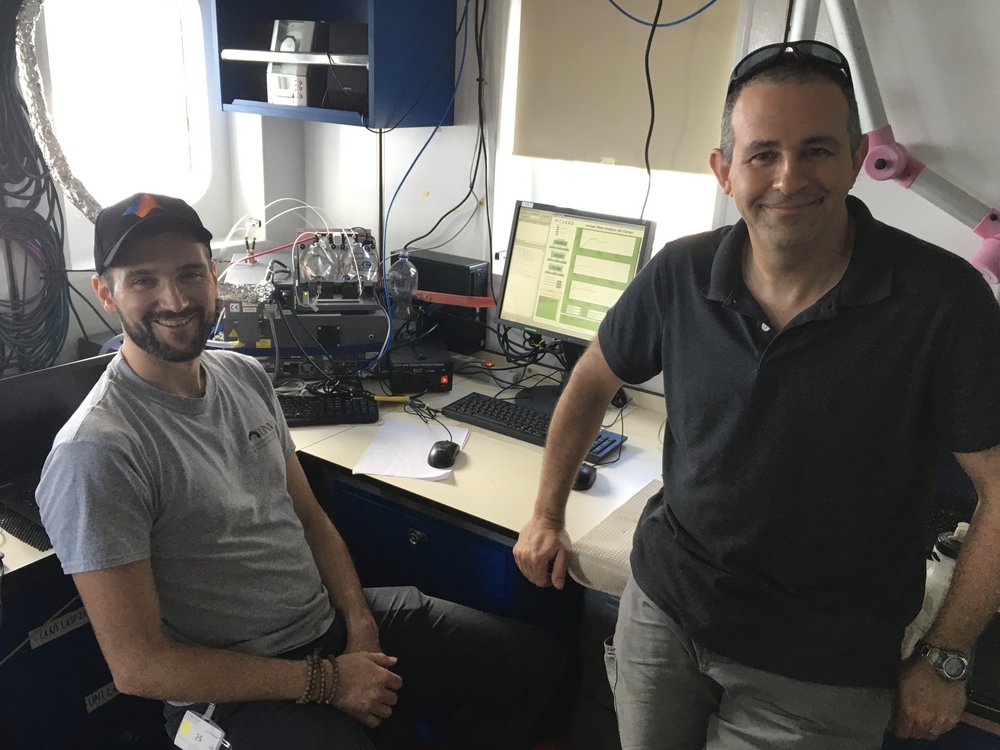As a scientist who has been using computer models to study clouds like those over Barbados for more than a decade, it has been wonderful to be able to see those clouds in person. Even better has been getting to meet and talk to other scientists who observe and measure those clouds and the atmosphere around them. On Friday (17 January), I visited the research ship R/V Meteor while it was in port at Bridgetown, Barbados, and got to meet and talk with scientists who are measuring the wind above the surface with lasers and others who are analyzing different kinds of water vapor.
 Geiske de Groot from TU Delft in the Netherlands and Søren Lund from the Denmark Technical University explained the workings of wind lidar, which uses lasers to deduce the wind speed in four different directions (each 15 degrees off the vertical) to reconstruct a vector wind velocity. Even though the lidar sits close to the surface, it can deduce the wind velocity as high as one mile (1.6km) above. While the lidar can't see through clouds, it will give us a great picture of how winds and momentum fluxes vary below and between clouds and how they're influenced by rainfall.
Geiske de Groot from TU Delft in the Netherlands and Søren Lund from the Denmark Technical University explained the workings of wind lidar, which uses lasers to deduce the wind speed in four different directions (each 15 degrees off the vertical) to reconstruct a vector wind velocity. Even though the lidar sits close to the surface, it can deduce the wind velocity as high as one mile (1.6km) above. While the lidar can't see through clouds, it will give us a great picture of how winds and momentum fluxes vary below and between clouds and how they're influenced by rainfall.
My collaborators, Joe Galewsky and Sebastian Los from the University of New Mexico, used a five-day cruise near Barbados to get their water vapor isotope analyzer (pictured) up and running before returning to port. The atoms that make up water, hydrogen and oxygen have heavier isotopes along with the most common one made up of 1H and 16O. These heavier isotopes have an extra neutron or two, and the extra mass makes these water molecules condense and evaporate differently from the usual H2O. People studying past climates often use information provided by the water isotopes in ice cores which formed from snowfall in the (sometimes distant) past. In the present, Sebastian, Joe, myself and the rest of the EUREC4A-iso (link: http://eurec4a.eu/index.php?id=5203) team are interested in how the ratios of the different water vapor are set over the ocean near Barbados and how they're related to the clouds and rainfall. The work of Sebastian, Joe and myself has been supported by the US National Science Foundation.
Sebastian and Geiske are sailing on with the Meteor for about six more weeks. They'll be taking measurements and traveling all the way to the Azores before returning to New Mexico and the Netherlands, respectively.

